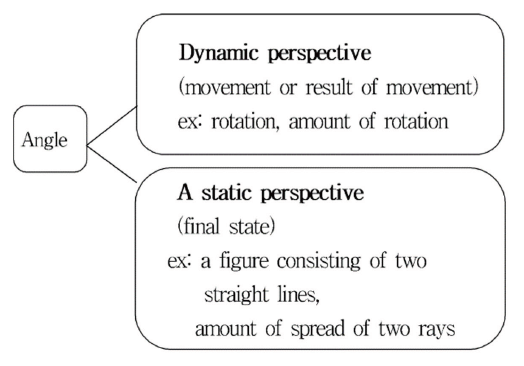Abstract
Angle has a variety of aspects, such as figure, measurement, and rotation, but is mainly introduced from a figure perspective and a quantitative perspective of the angle is also partially experienced in the elementary mathematics textbooks. The purpose of this study was to examine how the angle concept introduction and development pattern in elementary school mathematics textbooks are linked or changed in middle school mathematics textbooks, and based on this, was to get the direction of writing math textbooks and implications for guidance. To this end, 57 math textbooks for the first grade of middle school were collected from the first to the 2015 revised curriculum. As a result of the study, it was found that middle school textbooks had a greater dynamic aspect of each than elementary school textbooks, and the proportion of quantitative attributes of angle was higher in addition to qualitative and relational attributes. In other words, the concept of angle in middle school textbooks is presented in a more multifaceted and complex form than in elementary school textbooks. Finally, matters that require consensus within elementary, secondary, and secondary schools were also proposed, such as the use of visual expression or symbol, such as the use of arrows and dots, and the use of mathematical terms such as vertex of angle and side of angle.
Figures & Tables

Figure 1. Multi-faceted properties of angle (1).
